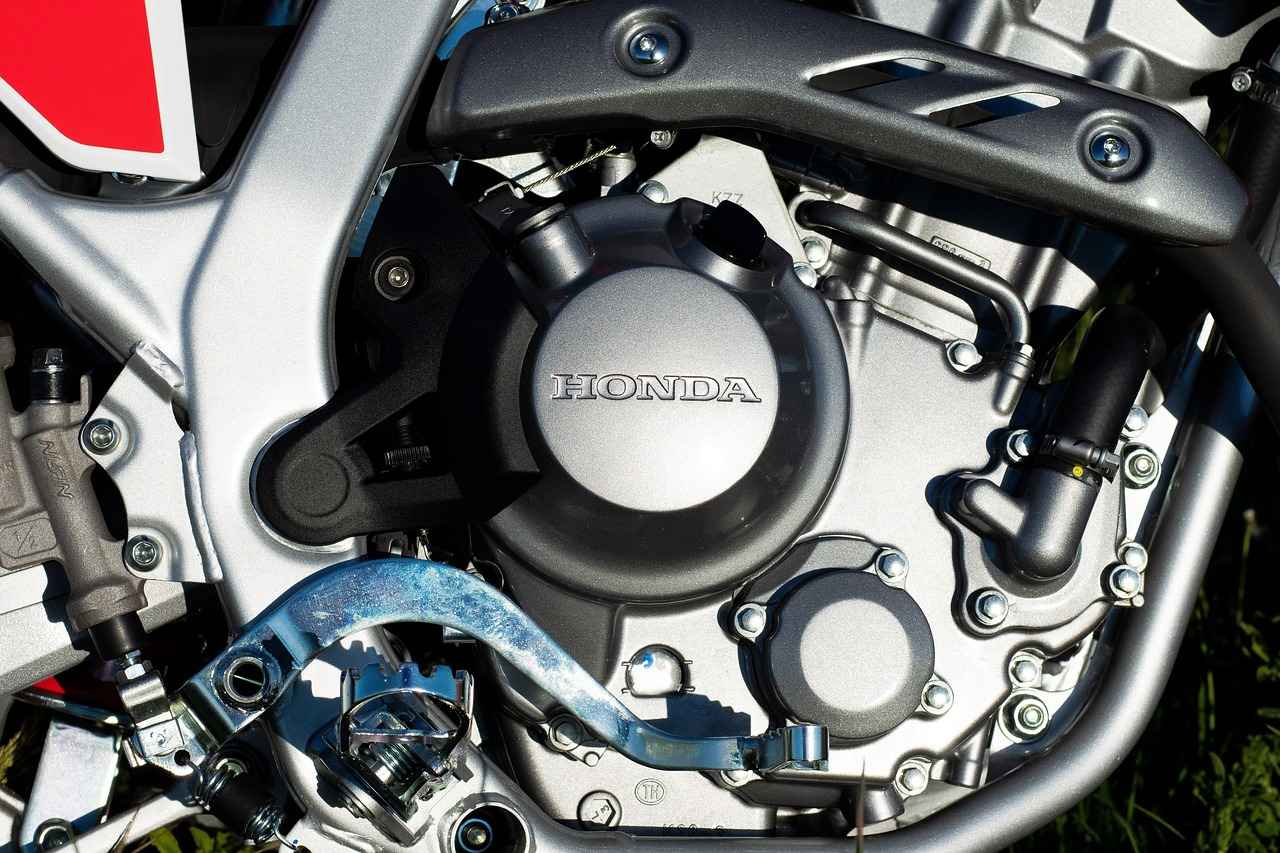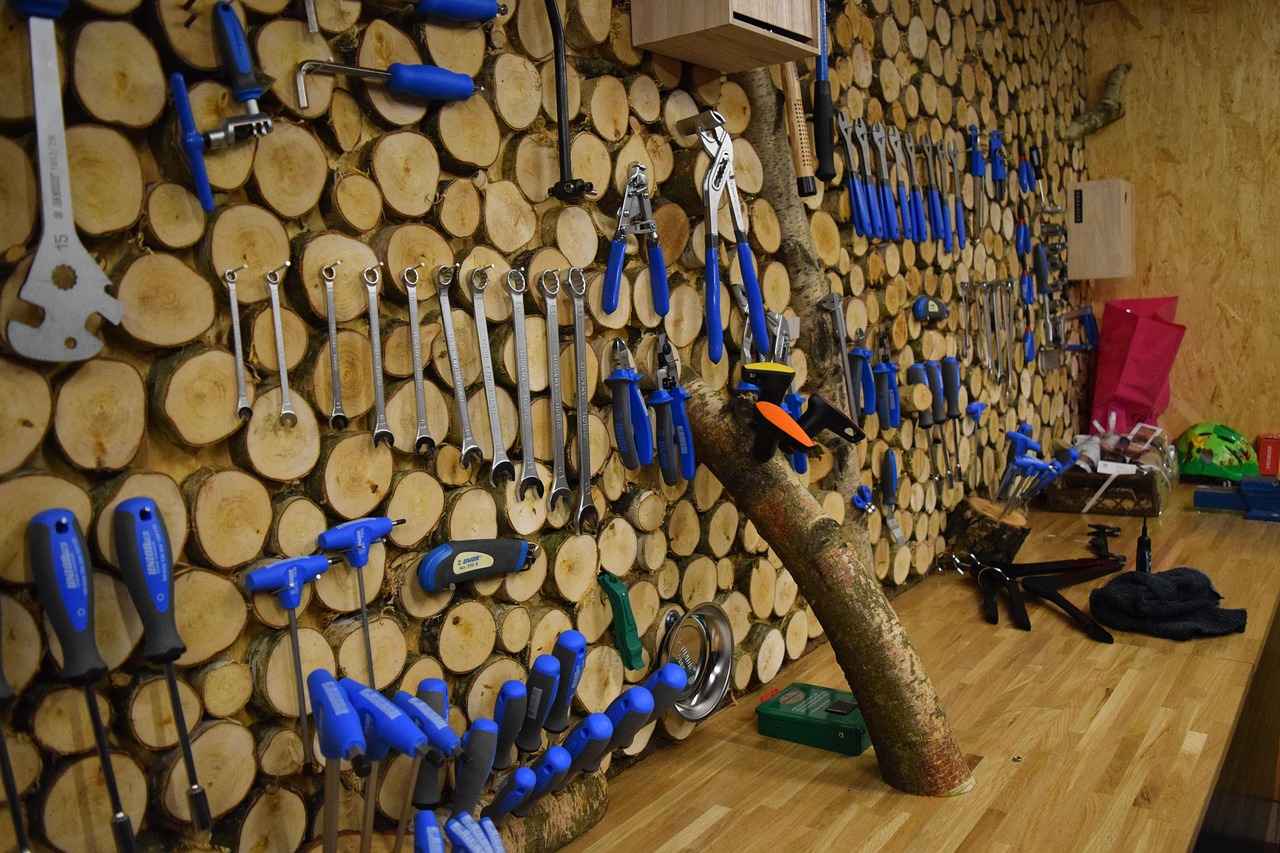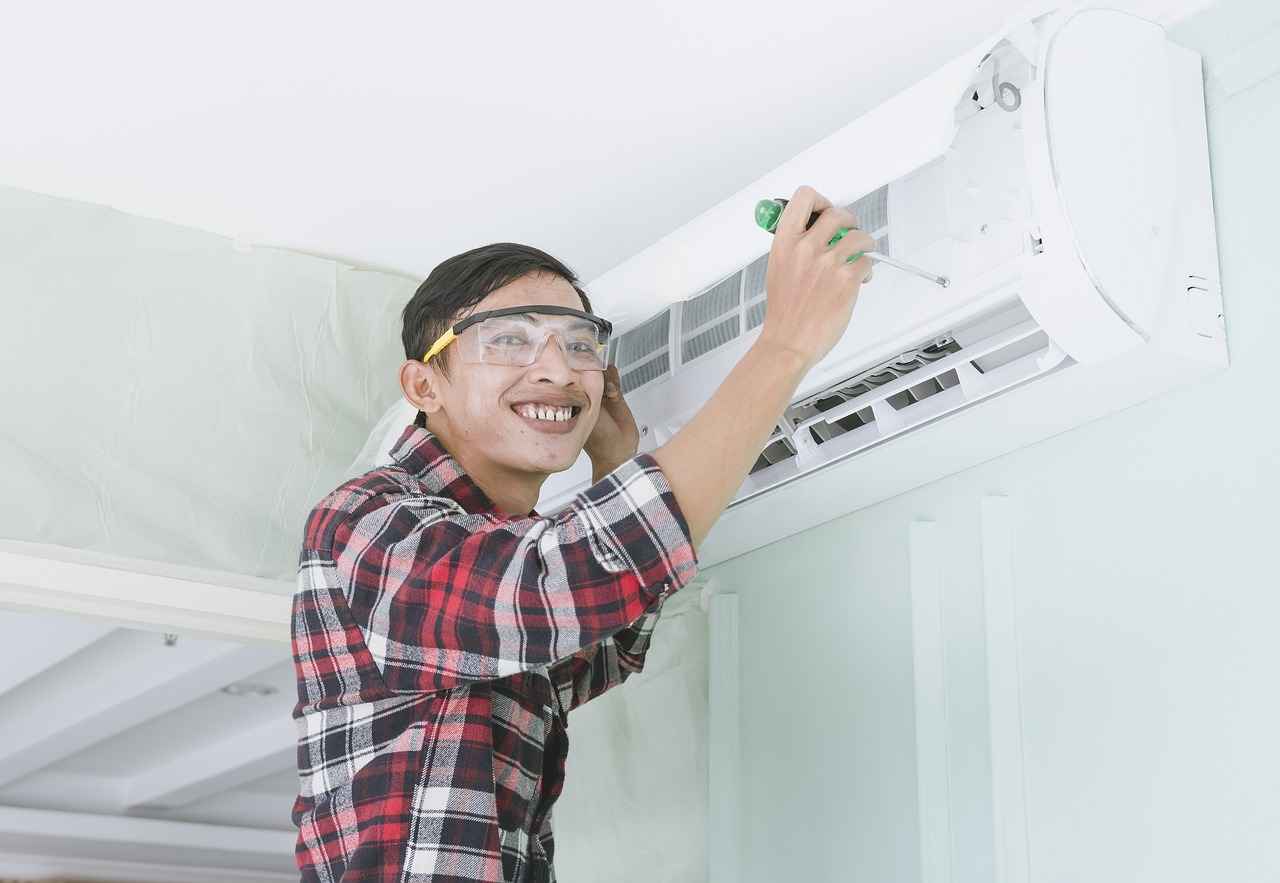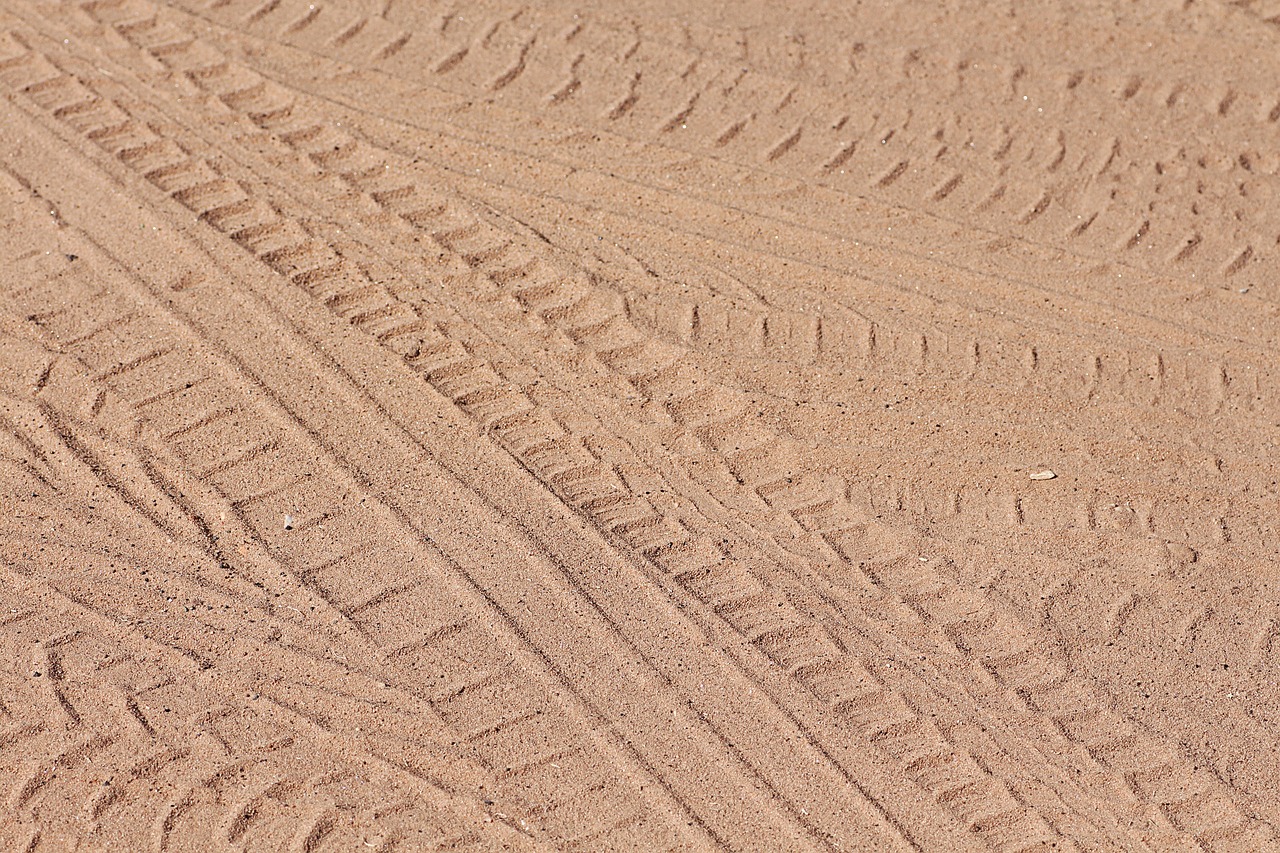This article provides a step-by-step guide on removing Solenoid A from a 2006 Honda Accord, ensuring clarity and precision for DIY enthusiasts and mechanics alike. Understanding the function and removal process of Solenoid A can significantly improve your vehicle maintenance skills and save you time and money.
Solenoid A is a critical component of the transmission system in your Honda Accord. It controls the flow of transmission fluid, which is essential for smooth gear shifts. When functioning properly, Solenoid A helps maintain optimal performance and efficiency in your vehicle.
There are several reasons you might need to remove Solenoid A:
- Transmission issues: If you experience slipping or harsh shifting, it may indicate a problem with the solenoid.
- Diagnostic trouble codes: Error codes related to the transmission can point to a malfunction in Solenoid A.
- Fluid leaks: A damaged solenoid can lead to transmission fluid leaks, necessitating removal and inspection.
Before you begin, gather the following tools to ensure a smooth operation:
- Socket set
- Ratchet
- Torque wrench
- Flathead screwdriver
- Safety goggles and gloves
Safety should always be your top priority:
- Disconnect the battery to prevent electrical shocks.
- Wear protective gear to shield against mechanical injuries.
Follow these steps to successfully remove Solenoid A:
Start by disconnecting the negative terminal of the battery. This precaution helps prevent any electrical hazards during the removal process.
To reach Solenoid A, you will need to remove the transmission pan. Begin by draining the transmission fluid and carefully unbolting the pan. Be prepared for some fluid spillage, so have a container ready.
Once the transmission pan is removed, locate Solenoid A. It is typically situated near the valve body and can be recognized by its electrical connector and mounting bolts.
Carefully detach the electrical connector from Solenoid A. Ensure that you handle it gently to avoid damaging either the connector or the solenoid.
Using the appropriate socket, unscrew the bolts holding Solenoid A in place. Keep these bolts in a safe location for reinstallation later.
After unscrewing the bolts, gently pull Solenoid A out of its housing. Inspect the solenoid for any signs of wear or damage as you remove it. This inspection can provide insights into any issues affecting your vehicle.
Be aware of potential complications that may arise, such as:
- Stuck bolts that may require penetrating oil.
- Damaged connectors that need replacement.
If you determine that Solenoid A is faulty, replacing it is a straightforward process. Simply follow the removal steps in reverse order to install the new solenoid effectively.
To ensure a proper reinstallation of Solenoid A:
- Follow torque specifications provided in your vehicle’s manual.
- Ensure all surfaces are clean to promote a good seal.
If you encounter difficulties during the removal process or are uncertain about any steps, it may be wise to consult a professional mechanic. This can help avoid further complications and ensure your vehicle is in good working order.

What is a Solenoid A in a Honda Accord?
Understanding the function of Solenoid A in a Honda Accord is essential for anyone involved in vehicle maintenance or repair. This component is a critical part of the vehicle’s transmission system, influencing the efficiency and effectiveness of gear shifts. In this section, we will explore the role of Solenoid A in detail, its importance, and how it affects overall vehicle performance.
Solenoid A is an electromagnetic switch that controls the flow of transmission fluid within the transmission system. It is responsible for engaging and disengaging various gears based on the vehicle’s speed and load conditions. This process is vital for ensuring smooth transitions between gears, which enhances driving comfort and efficiency.
The importance of Solenoid A cannot be overstated. It directly impacts the vehicle’s shifting performance. A malfunctioning solenoid can lead to issues such as:
- Delayed gear shifts: This can create a lag in acceleration and affect overall driving experience.
- Harsh shifting: Sudden or rough transitions between gears can lead to increased wear and tear on the transmission.
- Transmission overheating: Inefficient fluid flow can cause overheating, leading to costly repairs.
When the vehicle’s computer detects a need for a gear change, it sends an electrical signal to Solenoid A. This signal activates the solenoid, allowing transmission fluid to flow through specific channels, thereby engaging the appropriate gear. The precision of this process is crucial for maintaining optimal vehicle performance.
Recognizing the signs of a faulty Solenoid A is key to preventing further damage to the transmission. Common symptoms include:
- Check Engine Light: If this light illuminates, it may indicate a problem with the transmission system.
- Unusual noises: Grinding or clunking sounds during gear shifts can signal solenoid issues.
- Fluid leaks: Any signs of transmission fluid leaks should be addressed immediately.
To diagnose problems with Solenoid A, a mechanic will typically use a diagnostic scanner to read any trouble codes from the vehicle’s onboard computer. Additionally, a thorough inspection of the transmission fluid and electrical connections will help identify any underlying issues.
If Solenoid A is found to be malfunctioning, it is crucial to address the issue promptly. Depending on the severity of the problem, you may need to replace the solenoid entirely. This process involves:
- Removing the transmission pan to access the solenoid.
- Disconnecting the electrical connector and unscrewing the solenoid from its mounting.
- Installing a new solenoid and reassembling the components.
In summary, understanding the function of Solenoid A in a Honda Accord is vital for effective vehicle maintenance. By recognizing its role, signs of malfunction, and how to address issues, vehicle owners can ensure their transmission system operates smoothly and efficiently.

Why Would You Need to Remove Solenoid A?
When dealing with the transmission system of a 2006 Honda Accord, understanding the reasons for removing Solenoid A is essential for effective maintenance and repair. This component plays a pivotal role in managing gear shifts, and any issues related to it can significantly affect vehicle performance.
- Transmission Issues: If you experience slippage or irregular shifting, it may indicate a problem with Solenoid A.
- Poor Shifting Performance: Difficulty in shifting gears, such as hesitation or abrupt changes, can signal a malfunctioning solenoid.
- Diagnostic Trouble Codes (DTCs): The vehicle’s onboard diagnostic system may trigger codes related to solenoid failure, prompting further investigation.
Transmission issues can arise from various factors, and a faulty solenoid is often a key contributor. For instance, if the solenoid fails to open or close correctly, it can lead to inadequate hydraulic pressure, resulting in poor shifting performance. This can manifest as delayed shifts, harsh engagements, or even complete transmission failure in severe cases.
Modern vehicles, including the Honda Accord, are equipped with sophisticated diagnostic systems that monitor various components. If Solenoid A malfunctions, the system may generate a diagnostic trouble code (DTC). Common codes associated with solenoid failures include P0700 (Transmission Control System Malfunction) and P0750 (Shift Solenoid A Malfunction). These codes serve as critical indicators that warrant further inspection and potential removal of the solenoid.
In addition to the symptoms mentioned, there are other factors that may necessitate the removal of Solenoid A:
- Routine Maintenance: During scheduled maintenance checks, it may be prudent to inspect Solenoid A for wear and tear.
- Fluid Contamination: If the transmission fluid appears dirty or contaminated, addressing the solenoid may be necessary as it can affect overall transmission health.
- Upgrading Components: Some enthusiasts may choose to upgrade to high-performance solenoids for improved shifting dynamics.
In summary, removing Solenoid A from your Honda Accord may become necessary due to various issues ranging from transmission problems to diagnostic trouble codes. Understanding these symptoms and factors can help you maintain your vehicle’s performance effectively. Always ensure proper diagnosis before proceeding with removal, and consider consulting a professional if you are unsure about the process.

Tools Required for the Job
When it comes to tackling the task of removing Solenoid A from a 2006 Honda Accord, having the right tools is essential for a successful and efficient operation. A well-prepared workspace not only enhances productivity but also minimizes the risk of errors. Here’s a detailed list of tools you will need, along with their specific purposes:
- Socket Set: A comprehensive socket set is crucial for loosening and tightening bolts. Ensure you have a variety of socket sizes to accommodate different fasteners.
- Ratchet: This tool allows for quick and efficient turning of sockets, making it easier to remove bolts in tight spaces.
- Torque Wrench: A torque wrench is essential for applying the correct amount of torque when reinstalling components. This ensures that bolts are neither too loose nor overtightened, which can lead to damage.
- Flathead Screwdriver: A flathead screwdriver is useful for prying off electrical connectors or clips that may be securing Solenoid A in place.
- Pliers: Needle-nose pliers can help in gripping small components or connectors that are hard to reach.
- Oil Drain Pan: Since you will be removing the transmission pan, having an oil drain pan is necessary to catch any leaking transmission fluid.
- Shop Towels: Keep plenty of shop towels handy for cleaning up spills and wiping down tools or components.
Before you begin, it’s important to gather all these tools in one place. This will not only save time but also keep your workspace organized. Additionally, ensure that you have a good understanding of each tool’s function. For instance, knowing how to properly use the torque wrench is vital for the reinstallation phase, as improper torque can lead to future mechanical issues.
Furthermore, consider the importance of safety precautions. Always wear protective gear such as gloves and safety goggles to shield yourself from any potential hazards during the removal process. Disconnecting the battery is also crucial to prevent electrical shocks.
In summary, equipping yourself with the right tools can significantly streamline the removal of Solenoid A. By being well-prepared and informed, you can tackle this task with confidence, ultimately leading to a more effective repair process.

Safety Precautions to Consider
When working on your vehicle, especially when dealing with components like Solenoid A in a Honda Accord, prioritizing safety is not just a recommendation; it’s a necessity. The following guidelines will help ensure that your DIY project is conducted safely and effectively.
Working on vehicles involves handling heavy parts, electrical systems, and potentially hazardous materials. Neglecting safety measures can lead to serious injuries or accidents. By adhering to safety protocols, you can minimize risks and create a safer working environment.
- Protective Gloves: Always wear gloves to protect your hands from sharp edges and toxic substances.
- Safety Goggles: These are crucial for protecting your eyes from debris, chemicals, or accidental splashes.
- Steel-Toed Boots: Wearing sturdy footwear can prevent injuries from heavy parts that may fall.
- Long Sleeves and Pants: These provide an extra layer of protection against cuts and burns.
Before starting any electrical work, such as disconnecting the solenoid, follow these critical steps:
- Disconnect the Battery: Always disconnect the negative terminal of the battery first. This helps prevent electrical shocks and short circuits.
- Use Insulated Tools: Whenever possible, use tools with insulated handles to reduce the risk of electrical shock.
- Check for Power: Before touching any wires or connectors, use a multimeter to ensure there is no current flowing.
In addition to electrical safety, consider the following mechanical safety tips:
- Secure Your Work Area: Keep your workspace organized and free of clutter. This helps prevent accidents caused by tripping or falling objects.
- Use Proper Lifting Techniques: If you need to lift heavy components, use your legs for strength and keep your back straight to avoid injuries.
- Be Mindful of Hot Surfaces: Components like the transmission may be hot after operation. Allow them to cool down before handling.
Even with all precautions in place, accidents can happen. It’s essential to know what to do:
- Have a First Aid Kit Ready: Ensure your workspace is equipped with a first aid kit for minor injuries.
- Know Emergency Contacts: Keep a list of emergency contacts, including local emergency services and a nearby mechanic.
- Stay Calm: In case of an injury, remain calm. Assess the situation before taking action.
In conclusion, safety should always be your top priority when working on your vehicle. By following these guidelines and using the appropriate safety gear, you can effectively minimize risks and create a safer environment for your repairs. Remember, taking the time to ensure safety can save you from potential injuries and costly mistakes.

Step-by-Step Guide to Remove Solenoid A
This step-by-step guide is designed to assist DIY mechanics and automotive enthusiasts in the removal of Solenoid A from a 2006 Honda Accord. By following these detailed instructions, you will be able to execute the process with clarity and confidence.
Removing Solenoid A requires a systematic approach to ensure that the task is completed efficiently and safely. Below is a comprehensive guide to facilitate the removal process.
- Step 1: Disconnect the Battery
Start by disconnecting the negative terminal of the battery. This is a critical safety measure to prevent any electrical accidents while you work on the vehicle. - Step 2: Drain the Transmission Fluid
Before accessing Solenoid A, you must drain the transmission fluid. This involves locating the transmission fluid pan and removing the drain plug. Allow the fluid to completely drain into a suitable container. - Step 3: Remove the Transmission Pan
Once the fluid is drained, carefully unbolt the transmission pan. Use a socket set to remove the bolts, and gently pry the pan off if it’s stuck. Keep the pan and bolts in a safe place for reinstallation. - Step 4: Locate Solenoid A
After removing the transmission pan, locate Solenoid A. It is generally situated near the valve body and can be identified by its electrical connector and the mounting bolts securing it. - Step 5: Disconnect the Electrical Connector
Carefully detach the electrical connector from Solenoid A. Take your time to avoid damaging the connector or the solenoid itself, as these components are crucial for the vehicle’s operation. - Step 6: Unscrew Solenoid A
Using the appropriate socket, unscrew the bolts that hold Solenoid A in place. Make sure to keep track of these bolts for later use during reinstallation. - Step 7: Remove Solenoid A
Gently pull Solenoid A out of its housing. Inspect it for any signs of wear or damage. This inspection is vital to determine if a replacement is necessary.
While removing Solenoid A, you may encounter various challenges. Some common issues include:
- Stuck Bolts: Bolts may become corroded or stuck due to the heat and pressure in the transmission. Applying penetrating oil can help loosen them.
- Damaged Connectors: Be cautious while disconnecting the electrical connector. If it is damaged, it may require replacement.
If your inspection reveals that Solenoid A is faulty, replacing it is a straightforward process. Simply reverse the steps outlined above to install the new solenoid. Ensure that all connections are secure and follow the manufacturer’s torque specifications for the bolts.
For a successful reinstallation of Solenoid A, consider the following tips:
- Ensure all surfaces are clean to promote a good seal when reattaching the transmission pan.
- Follow the recommended torque specifications when tightening bolts to avoid over-tightening, which could lead to damage.
If you encounter difficulties or feel uncertain during the removal process, it is advisable to consult a professional mechanic. They can provide expert assistance and ensure that the job is done correctly, preventing potential complications.
Step 1: Disconnect the Battery
When working on your vehicle, especially with components like Solenoid A in a 2006 Honda Accord, safety should always be your top priority. One critical step in this process is disconnecting the battery. This action is essential to prevent any electrical hazards that could lead to injury or damage during the removal process.
Disconnecting the battery before starting any repair work on your vehicle is crucial for several reasons:
- Prevention of Electrical Shock: Working on electrical components without disconnecting the battery can expose you to the risk of electrical shock, which can be dangerous.
- Avoiding Short Circuits: If tools accidentally touch the battery terminals or wiring, it can create a short circuit, potentially damaging the vehicle’s electrical system.
- Protecting Sensitive Components: Many modern vehicles, including the Honda Accord, contain sensitive electronic components that can be damaged by sudden surges of electricity.
Follow these steps to disconnect the battery safely:
- Gather Your Tools: You will need a socket wrench, and possibly a pair of gloves to protect your hands.
- Locate the Battery: Open the hood of your Honda Accord and locate the battery. It’s usually situated near the front of the engine compartment.
- Identify the Negative Terminal: The negative terminal is typically marked with a – sign and is often colored black. This is the terminal you will disconnect first.
- Loosen the Terminal Clamp: Using your socket wrench, carefully loosen the nut on the negative terminal clamp. Be sure to turn the wrench counterclockwise.
- Remove the Clamp: Once the nut is loose, gently lift the clamp off the terminal. Avoid letting the clamp touch any metal surfaces to prevent accidental contact.
- Secure the Clamp: After removing the clamp, ensure it is secured away from the battery terminal to avoid accidental reconnection during your work.
Once the battery is disconnected, you can proceed with the removal of Solenoid A. It is advisable to wear protective gear such as gloves and safety glasses to further ensure your safety. Additionally, always keep your workspace organized to prevent losing any small parts.
Disconnecting the battery is a simple yet vital step in the process of removing Solenoid A from your Honda Accord. By taking this precaution, you not only protect yourself but also safeguard your vehicle from potential electrical issues. Always remember to reconnect the battery after completing your work, ensuring that all components are securely in place before starting the vehicle.
Step 2: Access the Transmission
Accessing the transmission is a critical step in removing Solenoid A from your 2006 Honda Accord. This process requires careful attention to detail to ensure that everything is done correctly and safely. Below is a detailed guide on how to access the transmission effectively.
Accessing the transmission is essential because it allows you to reach Solenoid A, which is typically located within the transmission assembly. By properly accessing this area, you can perform necessary repairs or replacements without causing damage to other components.
- Socket Set: A comprehensive socket set will help you unbolt the transmission pan and other components.
- Ratchet: A ratchet will make it easier to loosen and tighten bolts.
- Torque Wrench: This tool is essential for ensuring that bolts are tightened to the manufacturer’s specifications.
- Flathead Screwdriver: Useful for prying off any clips or covers that may be in the way.
Follow these steps to access the transmission properly:
Before you begin, make sure you have a clean and organized workspace. Gather all necessary tools and ensure you have adequate lighting to see the components clearly.
To prevent any spills or leaks, it is crucial to drain the transmission fluid before removing the transmission pan. Locate the transmission fluid pan and place a suitable container underneath it. Remove the drain plug and allow the fluid to fully drain out. This step not only keeps your workspace clean but also protects the environment.
Once the fluid is drained, you can proceed to remove the transmission pan. Use your socket set to unbolt the pan carefully. Start from one end and work your way around to avoid bending or damaging the pan. It’s advisable to have a second person help you hold the pan as you unbolt it to prevent it from falling.
After removing the pan, take a moment to inspect it along with the gasket. Look for any signs of wear, damage, or debris. A damaged gasket can lead to leaks, so it may be wise to replace it when reassembling.
Before reinstalling the transmission pan, clean the mating surface on the transmission. This ensures a good seal when you put everything back together. Use a scraper to remove any old gasket material, and ensure that the surface is smooth and free of debris.
While accessing the transmission, you may encounter several challenges, including:
- Stuck Bolts: Bolts may become corroded or stuck over time, making them difficult to remove. Use penetrating oil to help loosen them.
- Fluid Spills: Always be prepared for spills when draining fluid. Keep absorbent materials on hand to manage any leaks.
- Space Constraints: Depending on your workspace, maneuvering tools can be challenging. Ensure you have enough room to work comfortably.
By following these detailed steps and being aware of potential challenges, you will be better equipped to access the transmission safely and efficiently. This preparation sets the stage for a successful removal of Solenoid A, allowing you to address any transmission issues your Honda Accord may be experiencing.
Step 3: Locate Solenoid A
When you reach the stage of removing Solenoid A from your 2006 Honda Accord, it is essential to know exactly where to find it. This step is crucial for ensuring a smooth removal process and avoiding any unnecessary complications.
Solenoid A is a vital component of the transmission system in your Honda Accord. To effectively locate it, you must first remove the transmission pan. This process involves several steps, including draining the transmission fluid and unbolting the pan from the transmission housing. Once the pan is removed, you will gain access to the internal components of the transmission.
After successfully removing the transmission pan, locating Solenoid A becomes much easier. Typically, Solenoid A is situated near the valve body of the transmission. It can be recognized by its distinct features:
- Electrical Connector: Solenoid A will have a wiring harness connected to it, which is essential for its operation.
- Mounting Bolts: Look for bolts that secure the solenoid in place; these will need to be removed during the extraction process.
For those who may not be familiar with the layout of the transmission, having a visual reference can be immensely helpful. Consider consulting a service manual or online resources that provide diagrams of the transmission assembly. These resources often highlight the location of Solenoid A, making your task easier.
Here are some practical tips to ensure you can locate Solenoid A without any hassle:
- Use a Flashlight: The transmission area can be dark and cramped. A good flashlight can help illuminate hard-to-see areas.
- Take Your Time: Rushing can lead to mistakes. Carefully inspect the area to ensure you accurately identify Solenoid A.
- Keep Tools Handy: Having your tools within reach will allow you to quickly address any issues that may arise during this stage.
When locating Solenoid A, be mindful of common pitfalls:
- Confusing Solenoid A with Other Components: There are several solenoids and sensors in the transmission. Ensure you are focusing on the correct one.
- Neglecting to Disconnect Electrical Connections: Before attempting to remove Solenoid A, always ensure that the electrical connector is safely detached to prevent damage.
By following these guidelines, you can efficiently locate Solenoid A and prepare for its removal. This step is vital for diagnosing and resolving transmission issues effectively.
Step 4: Remove the Electrical Connector
In the process of removing Solenoid A from your 2006 Honda Accord, one of the critical steps involves detaching the electrical connector. This action is essential for ensuring a smooth removal process and preventing damage to sensitive components. Below, we delve into the specifics of this step.
The electrical connector serves as the communication link between the solenoid and the vehicle’s electrical system. It transmits signals that control the solenoid’s operation. Therefore, removing this connector carefully is vital to maintain its integrity and functionality.
When you approach the detachment of the electrical connector from Solenoid A, follow these guidelines to ensure safety and prevent damage:
- Examine the Connector: Before touching the connector, take a moment to inspect it for any signs of wear or damage. Look for cracks or corrosion that could complicate the removal process.
- Identify the Release Mechanism: Most electrical connectors have a locking tab or clip. Familiarize yourself with this mechanism, as it is essential for a safe detachment.
- Use the Right Tools: Depending on the design of the connector, you may need a flathead screwdriver or a specialized tool to gently pry the locking tab without applying excessive force.
1. Ensure the vehicle is turned off and the battery is disconnected to avoid any electrical shocks.2. Locate the electrical connector attached to Solenoid A. 3. Carefully press down on the locking tab while pulling the connector straight out. Avoid twisting or yanking, as this can cause damage.4. If the connector is stuck, do not force it. Instead, gently wiggle it while applying pressure to the tab until it releases.5. Once detached, inspect the connector pins for any debris or corrosion, which can affect future connectivity.
Many DIY enthusiasts can make common mistakes when detaching electrical connectors. Here are a few to watch out for:
- Forcing the Connector: Avoid using excessive force, as this can break the connector or damage the wiring.
- Neglecting to Disconnect the Battery: Always disconnect the battery before working on electrical components to prevent shocks.
- Ignoring Signs of Damage: If you notice any damage to the connector or wiring, it’s best to address these issues before proceeding.
As you prepare to remove Solenoid A, remember that patience and attention to detail are your best allies. By following the steps outlined above and taking care to handle the electrical connector gently, you can ensure a successful removal process without causing damage to your vehicle.
Whether you are a seasoned mechanic or a DIY novice, understanding each step in the process will enhance your confidence and skill. Always prioritize safety and take the time to perform each task correctly to achieve the best results.
Step 5: Unscrew Solenoid A
In the process of removing Solenoid A from your 2006 Honda Accord, it is essential to follow the steps carefully to ensure a smooth operation. This section focuses on the critical step of unscrewing Solenoid A, which requires precision and attention to detail.
Once you have successfully located Solenoid A and disconnected its electrical connector, it’s time to proceed with unscrewing the bolts that secure it in place. This step is crucial as it involves the removal of the solenoid from its housing, which can significantly affect your vehicle’s transmission system if not handled correctly.
Gather the Right Tools
- Ensure you have the appropriate socket size that fits the bolts of Solenoid A. Typically, a 10mm socket is commonly used, but verify based on your specific model.
- A ratchet will be necessary to provide the torque needed to loosen the bolts.
- Consider using a magnetic tray to keep the bolts secure and organized during the process.
Unscrewing the Bolts
With your tools ready, carefully position the socket onto the first bolt. Turn the ratchet counterclockwise to begin loosening it. It is essential to apply steady and even pressure to avoid stripping the bolt head. If the bolt is stuck, you may need to use a penetrating oil to help loosen it.
Once the first bolt is removed, proceed to the next. Keep track of the bolts by placing them in the magnetic tray or a designated area. This organization will be invaluable during reinstallation, ensuring that you do not lose any components.
After all bolts have been unscrewed, gently pull Solenoid A away from its mount. If you encounter resistance, double-check to ensure that all bolts have been removed. It is crucial not to force the solenoid out, as this could damage the surrounding components or the solenoid itself.
Inspecting for Damage
As you remove Solenoid A, take a moment to inspect it for any signs of wear or damage. Look for cracks, corrosion, or any other irregularities that could indicate a malfunction. This inspection will guide your decision on whether to replace the solenoid or simply clean and reinstall it.
In summary, unscrewing Solenoid A requires careful attention to detail. By using the right tools, keeping track of the bolts, and performing a thorough inspection, you can ensure a successful removal process that sets the stage for effective repairs or replacements.
Step 6: Remove Solenoid A
When it comes to removing Solenoid A from your 2006 Honda Accord, precision and care are paramount. This step is crucial in ensuring that you do not damage any surrounding components or the solenoid itself. Here’s a detailed breakdown of the process:
After you have successfully unscrewed the bolts holding Solenoid A in place, it’s time to proceed with the removal. Follow these steps carefully:
- Carefully pull Solenoid A out of its housing. This requires a gentle yet firm grip. Avoid using excessive force as this could lead to damage to the solenoid or the surrounding components.
- Inspect the solenoid. As you remove it, take a moment to examine Solenoid A for any signs of wear or damage. Look for cracks, corrosion, or any other irregularities that could indicate a malfunction. This inspection is crucial for determining whether you need a replacement or if the solenoid can be reused.
- Check the connectors. While pulling out the solenoid, ensure that the electrical connectors are intact. If they appear frayed or damaged, they will also need attention.
- Keep the workspace organized. Place the solenoid in a clean area to prevent any contaminants from affecting its performance. Keeping your workspace tidy can also help you keep track of any small parts or bolts that you may need for reinstallation.
Additionally, it’s essential to note that the removal process may vary slightly depending on the specific condition of your vehicle and any modifications that may have been made. Always refer to the vehicle’s service manual for any manufacturer-specific instructions that may apply.
After the solenoid has been removed and inspected, consider documenting the condition of the solenoid. This can be useful for future reference, especially if you are troubleshooting transmission issues.
In conclusion, removing Solenoid A requires a careful approach. By following the steps outlined above, you can ensure a smooth removal process while minimizing the risk of damage. Remember, if you encounter any difficulties, it may be wise to consult a professional mechanic for assistance.

Common Issues Encountered During Removal
When removing Solenoid A from a 2006 Honda Accord, it is essential to be aware of the potential complications that can arise during the process. Understanding these issues can help you prepare adequately and avoid unnecessary delays or damage to your vehicle.
Several challenges may occur when attempting to remove Solenoid A. Here are some of the most common issues:
- Stuck Bolts: One of the most frequent problems encountered is stuck bolts. Over time, bolts can corrode or seize due to heat and exposure to transmission fluid. This can make removal difficult, requiring additional tools such as penetrating oil or heat to loosen them.
- Damaged Connectors: The electrical connectors attached to Solenoid A can become brittle and break during removal. It’s crucial to handle these connectors with care to avoid damaging them, which can lead to expensive repairs or replacement parts.
- Fluid Leaks: Removing Solenoid A may also lead to transmission fluid leaks. Ensure that you have a suitable container ready to catch any fluid that may escape when you remove the transmission pan or solenoid. This will help maintain a clean workspace and prevent slipping hazards.
- Misalignment: If Solenoid A is not aligned properly during reinstallation, it can cause shifting issues or even damage to the transmission. Always double-check the alignment before securing the solenoid back in place.
- Electrical Issues: If the electrical system is not handled correctly, it may lead to short circuits or other electrical problems. Always disconnect the battery before beginning the removal process to mitigate these risks.
Being proactive can significantly reduce the likelihood of encountering these issues. Here are some tips:
- Use Penetrating Oil: Apply penetrating oil to the bolts a few hours before you start working. This can help loosen any rust or corrosion, making the removal process smoother.
- Inspect Connectors: Before starting the removal, inspect the electrical connectors for any signs of wear. If they appear damaged, consider replacing them before proceeding.
- Prepare for Fluid Leaks: Have rags or absorbent pads ready to manage any spills. This preparation can save time and prevent a mess.
- Follow the Manual: Always refer to the vehicle’s service manual for specific instructions and torque specifications. This can help ensure proper reinstallation and alignment.
If you encounter complications during the removal process, don’t panic. Here are steps you can take:
- For Stuck Bolts: Use a breaker bar or impact wrench to gain more leverage. If that fails, apply heat carefully to the area around the bolt to expand the metal and break the bond.
- For Damaged Connectors: If a connector breaks, you may need to replace it. Consult your local auto parts store or dealership for the correct replacement.
- For Fluid Leaks: Clean up any spills immediately and ensure that you have enough transmission fluid to refill the system after reinstallation.
By being aware of these potential issues and following the suggested precautions, you can make the removal of Solenoid A a more manageable and successful task.

How to Replace Solenoid A
Replacing Solenoid A in your 2006 Honda Accord is not only essential for maintaining optimal performance but also a task that can be handled with relative ease. This guide aims to provide you with a comprehensive overview of the replacement process, ensuring you have all the information you need to complete the job successfully.
Before diving into the replacement, it’s important to understand the role of Solenoid A. This component is integral to the transmission system, assisting in the shifting of gears. A malfunctioning solenoid can lead to poor performance, causing issues like slipping or rough shifts. Therefore, if you suspect that Solenoid A is faulty, addressing it promptly is crucial.
- Socket Set – Essential for removing bolts.
- Ratchet – To work efficiently with the socket set.
- Torque Wrench – For ensuring bolts are tightened to specification.
- Flathead Screwdriver – Useful for prying off connectors.
- Safety Gear – Gloves and goggles to protect yourself during the process.
Once you have gathered your tools, follow these steps to replace Solenoid A:
Start by ensuring your vehicle is parked on a level surface. Engage the parking brake and disconnect the negative terminal of the battery to prevent any electrical issues.
To access Solenoid A, you will need to remove the transmission pan. Begin by draining the transmission fluid into a suitable container. Then, unbolt the transmission pan carefully, making sure to keep track of the bolts for reinstallation.
With the transmission pan removed, locate Solenoid A, which is typically positioned near the valve body. Disconnect the electrical connector gently to avoid damage. Next, use your socket set to unscrew the bolts securing Solenoid A in place. Be cautious and keep the bolts organized.
Take your new Solenoid A and carefully place it into the housing. Ensure that it is seated properly. Reattach the bolts and tighten them to the manufacturer’s specifications using a torque wrench. This step is crucial for avoiding future leaks or failures.
Once Solenoid A is securely in place, reconnect the electrical connector. Make sure it clicks into place firmly to ensure a good connection.
After replacing the solenoid, it’s time to reinstall the transmission pan. Ensure that the gasket is in good condition or replace it if necessary. Bolt the pan back on, following the correct torque specifications.
Finally, refill the transmission with the appropriate fluid. Check your vehicle’s manual for the correct type and amount. Start the engine and allow it to run for a few minutes, checking for leaks around the solenoid and transmission pan.
- Neglecting Safety Precautions – Always disconnect the battery and wear safety gear.
- Overtightening Bolts – This can strip threads or damage components.
- Forgetting to Reconnect Electrical Connectors – Ensure all connections are secure before starting the vehicle.
If you encounter any difficulties during the replacement process or are unsure about any step, it is advisable to seek help from a qualified mechanic. This can prevent further complications and ensure that your vehicle operates smoothly.

Tips for Successful Reinstallation
When it comes to reinstalling Solenoid A in your Honda Accord, following best practices is essential for ensuring optimal performance and longevity. Proper reinstallation not only helps avoid potential issues but also guarantees that the solenoid functions as intended within the vehicle’s transmission system. Here are some key tips to ensure a successful reinstallation:
- Clean Surfaces: Before reinstalling Solenoid A, make sure that all surfaces are thoroughly cleaned. This includes the mounting area and the solenoid itself. Any debris or old sealant can hinder the sealing process, leading to leaks or malfunction.
- Check Torque Specifications: Always adhere to the manufacturer’s torque specifications when tightening the bolts. Proper torque ensures that the solenoid is securely fastened without damaging the component. Using a torque wrench is highly recommended for this task.
- Inspect the Gasket: If Solenoid A uses a gasket, ensure that it is in good condition. A damaged or worn gasket can lead to fluid leaks. If necessary, replace the gasket to maintain a proper seal.
- Reconnect Electrical Connectors: Carefully reconnect the electrical connector to Solenoid A, ensuring it clicks into place securely. A loose connection can lead to intermittent issues that may be difficult to diagnose.
- Double-Check Alignment: Make sure that Solenoid A is aligned correctly with the valve body. Misalignment can cause operational issues and may lead to premature failure of the solenoid.
- Perform a Final Inspection: After installation, conduct a thorough inspection of the solenoid and surrounding areas. Look for any signs of leakage or misalignment before reassembling the transmission pan.
- Test the System: Once everything is reinstalled, it is crucial to test the vehicle’s transmission system. Check for proper gear shifting and listen for any unusual noises that could indicate a problem.
By following these tips, you can ensure that the reinstallation of Solenoid A is done correctly, enhancing the reliability and performance of your Honda Accord. Taking the time to adhere to these best practices will save you from future complications and extend the lifespan of the solenoid and transmission system.
In summary, remember that a successful reinstallation involves not just the physical act of placing the solenoid back in its housing, but also a meticulous approach to preparation and follow-up. By prioritizing cleanliness, adhering to torque specifications, and ensuring all connections are secure, you can achieve a seamless reinstallation process.

When to Seek Professional Help
When undertaking automotive repairs, especially those involving critical components like the transmission solenoid, it’s essential to assess your own skills and knowledge. While many DIY enthusiasts relish the challenge of car repairs, there are times when professional assistance is not just recommended but necessary. Here are some key considerations to help you decide when to consult a professional mechanic.
- Lack of Experience: If you are unfamiliar with the workings of your vehicle, particularly the transmission system, it may be prudent to seek help. Mechanics have extensive training and can diagnose issues that might not be immediately apparent to a novice.
- Complex Repairs: Some repairs require specialized tools and expertise. If the removal of Solenoid A or any related components seems overwhelming, a professional can ensure that the job is done correctly and safely.
- Time Constraints: If you’re short on time or lack the necessary tools, hiring a mechanic can save you from potential frustration and delays. Professionals can often complete repairs more quickly due to their experience and access to equipment.
- Uncertainty About the Issue: If you’re unsure whether the solenoid is the root of the problem or if there are multiple issues at play, a mechanic can perform a thorough diagnostic. This can prevent unnecessary part replacements and associated costs.
- Safety Concerns: Working on a vehicle can be hazardous. If you feel uncomfortable or unsafe performing certain tasks, it’s best to leave it to the experts. Safety should always be your top priority.
Additionally, if you encounter any of the following situations, seeking professional help is highly advisable:
- Persistent Error Codes: If your vehicle’s diagnostic system continues to display trouble codes after replacing components, a mechanic can provide a comprehensive analysis to pinpoint the underlying issue.
- Physical Damage: If you notice signs of physical damage to the solenoid or surrounding components, a mechanic can assess the extent of the damage and recommend appropriate repairs.
- Fluid Leaks: Any signs of fluid leaks around the transmission area should be addressed immediately by a professional, as they can lead to more severe problems if left untreated.
In conclusion, while DIY repairs can be rewarding, knowing your limits is crucial. If you encounter difficulties or are unsure about the process, it may be wise to consult a professional mechanic to avoid further complications. Not only can they save you time and effort, but they can also provide peace of mind knowing that your vehicle is in expert hands.
Frequently Asked Questions
- What tools do I need to remove Solenoid A from my Honda Accord?
To successfully remove Solenoid A, you’ll need a socket set, a ratchet, a torque wrench, and a flathead screwdriver. Having these tools handy will make the process much smoother!
- How can I tell if Solenoid A is malfunctioning?
Common signs of a faulty Solenoid A include poor shifting performance, unusual noises from the transmission, or diagnostic trouble codes related to the transmission system. If you notice any of these, it might be time to check or replace the solenoid.
- Is it safe to remove Solenoid A on my own?
Yes, it can be safe to remove Solenoid A on your own if you follow the proper safety precautions, like disconnecting the battery and wearing protective gear. However, if you feel unsure at any point, don’t hesitate to reach out to a professional mechanic!
- What should I do if I encounter stuck bolts during removal?
If you encounter stuck bolts, try using penetrating oil to loosen them. Let it sit for a while, then gently attempt to unscrew them. If they still won’t budge, you might need to seek professional help to avoid damaging the transmission.
- Can I reuse the old bolts when reinstalling Solenoid A?
While you can technically reuse the old bolts, it’s recommended to use new ones for better security and to ensure proper torque specifications during reinstallation. It’s a small investment for peace of mind!



